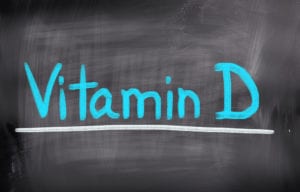Written by Jessica Patella, ND. Vitamin D deficiency was significantly more prevalent among United States prison inmates who had less sun exposure in maximum security as well as black inmates whose vitamin D levels were compromised by their higher skin levels of melanin.
 The United States, with more than 8 million inmates, has the highest prisoner population per capita of any county in the world 1-3. Inmates often suffer from poor health and nutritional status. A recent study found vitamin D status is low in the majority of prisoners, which is important to understand due to the negative consequences of bone related disease in inmates and the cost to national healthcare 1.
The United States, with more than 8 million inmates, has the highest prisoner population per capita of any county in the world 1-3. Inmates often suffer from poor health and nutritional status. A recent study found vitamin D status is low in the majority of prisoners, which is important to understand due to the negative consequences of bone related disease in inmates and the cost to national healthcare 1.
In the first study of its kind, data was collected from the Massachusetts Department of Correction’s Inmate Management System (IMS) database. Medical records were reviewed and participants were included in the study if their serum 25(OH) vitamin D levels were recorded. A total of 526 inmates were included (males n= 502, average age 48 +/- 12.5 years; females n=24, average age 44.1 +/- 12.2 years) and analyzed. Each inmate’s date of vitamin D blood draw was categorized depending on season, spring (March 22-June21), summer (June22-Sept21), fall (Sept 22-Dec21) and winter (Dec22-March21) 1.
Vitamin D status was based on the following ranges of 25(OH) vitamin D concentration and the following results were observed:
- 31% Vitamin D sufficiency: greater than 75 nmol/L
- 34% Vitamin D insufficiency: 50-75 nmol/L
- 33% Vitamin D deficiency: less than 50 nmol/L (50.5% of black inmates, 29.3% of white inmates, 14.3% Asian inmates, 35% of Others (p<0.001)).
In regards to race, black inmates had significantly lower vitamin D levels than the white male inmates (p<0.001). There were no other significant differences between races or in females 1.Vitamin D is obtained not only through the diet, but also through the skin from sun exposure. It was found that inmates varied with respect to sun exposure and their level of security as follows:
- Minimum security level: 5-10 hours of sun per day (exercise, road crews, maintenance)
- Medium security level: 1-5 hours of sun per day (supervised recreational activities)
- Maximum security level: 1 hour of sun per day (recreational activities under heavy guard)
These results in terms of level of security and vitamin D status tended to correlated with amount of time exposed to sunlight.
- Minimum security level vitamin D average: 61.7 +/- 27.4 nmol/L
- Medium security level vitamin D average: 63.7 +/- 27.4 nmol/L
- Maximum security level vitamin D average: 54.1 +/- 28.0 nmol/L
These results show that inmates at the maximum security level had significantly lower vitamin D levels compared to the medium or minimal security level (p=0.029) 1. This difference is even more pronounced between black and white inmates at the maximum security level (44.3 +/- 24.0 vs 61.1 +/- 28.5 nmol/L, p=0.015) and at the medium security level (53.5 +/- 20.8 vs 66.3 +/- 66.3 +/- 28.7 nmol/L, p=0.001) 1. Overall, black inmates at the maximum security level were 4 times more likely to be vitamin D deficient than white inmates 1(1). They have more melanin in their skin which functions as a natural sunscreen and hinders the production of vitamin D. 1,4.
In conclusion, in the United States prison system with uniform nutritional guidelines, the main factors that determined the vitamin D status of an inmate were skin color and the level of incarceration. This study showed high rates of low vitamin D levels in inmates, which have costly comorbidities, therefore changes in diet or supplementation of more vitamin D in prison inmates should be considered 1.
Source: Nwosu, Benjamin Udoka, Louise Maranda, Rosalie Berry, Barbara Colocino, Carlos D. Flores Sr, Kerry Folkman, Thomas Groblewski, and Patricia Ruze. “The vitamin D status of prison inmates.” PloS one 9, no. 3 (2014): e90623.2014 Nwosu et al.
This is an open-access article distributed under the terms of the Creative Commons Attribution License, which permits unrestricted use, distribution, and reproduction in any medium, provided the original author and source are credited.
Click here to read the full text study.
Posted June 13, 2018.
References:
- Nwosu BU, Maranda L, Berry R, et al. The vitamin D status of prison inmates. PloS one. 2014;9(3):e90623.
- Binswanger IA, Stern MF, Deyo RA, et al. Release from prison—a high risk of death for former inmates. New England Journal of Medicine. 2007;356(2):157-165.
- Corrigan F, Gray R, Strathdee A, Skinner R, Rhijn AV, Horrobin D. Fatty acid analysis of blood from violent offenders. Journal of Forensic Psychiatry. 1994;5(1):83-92.
- Clemens T, Henderson S, Adams J, Holick M. Increased skin pigment reduces the capacity of skin to synthesise vitamin D3. The Lancet. 1982;319(8263):74-76.

